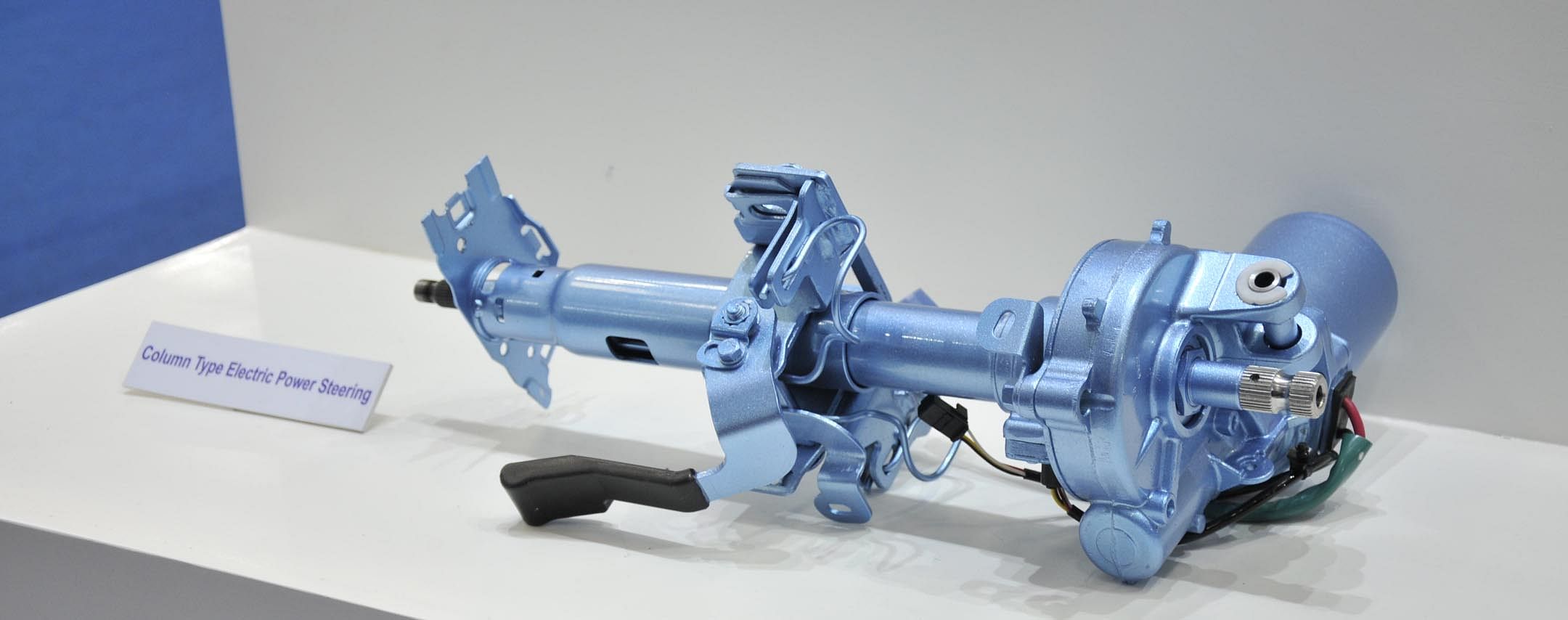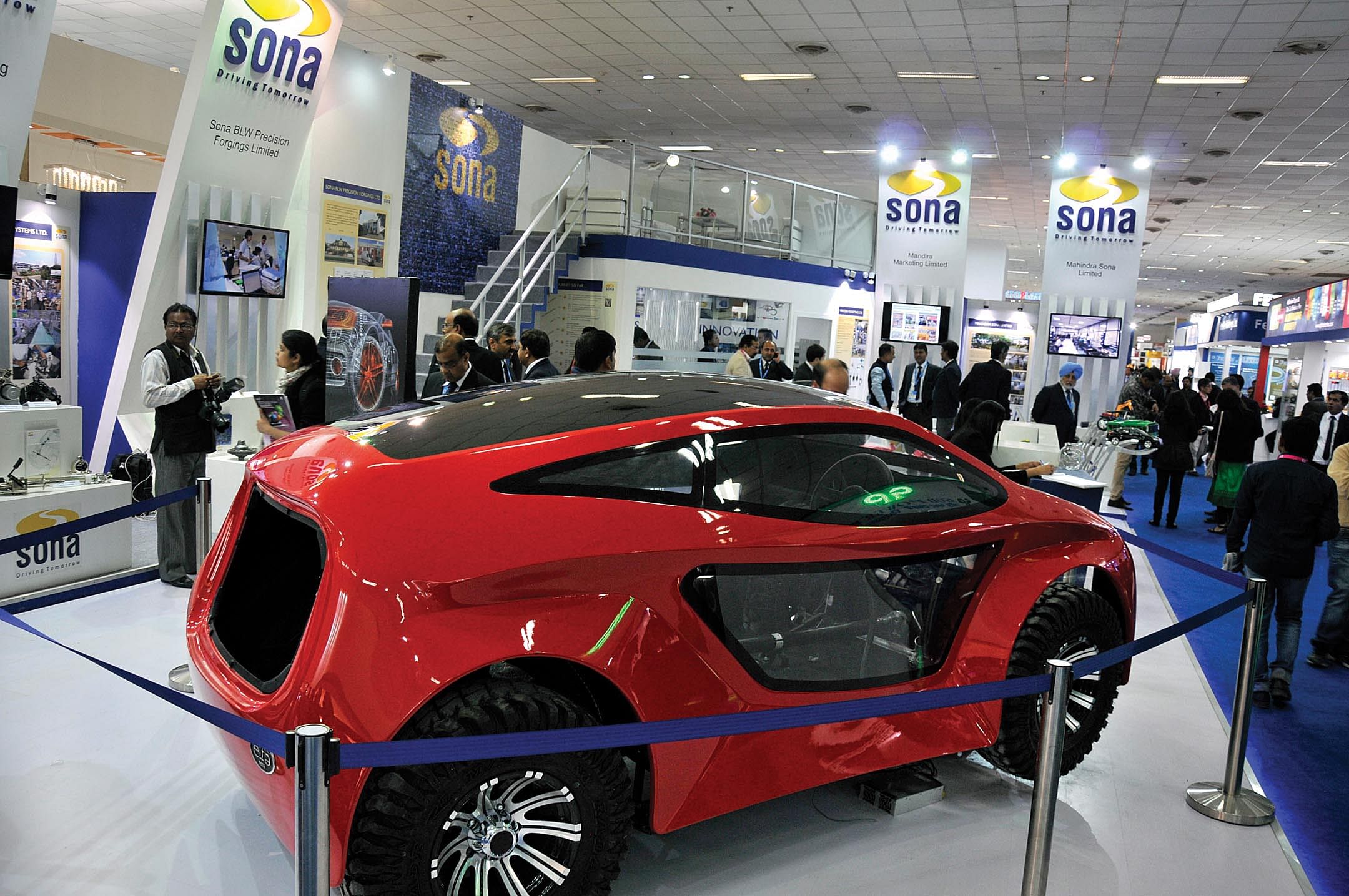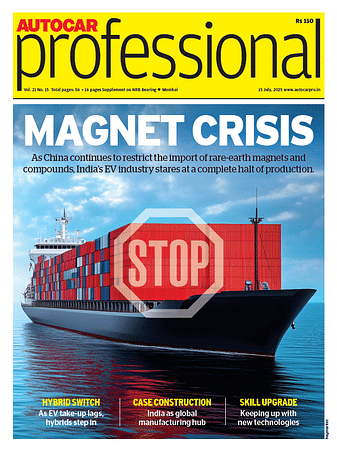'We are now also developing e-axles as we see the future in electric mobility.'
Sunjay Kapur, CEO, Sona Group on divesting Sona Koyo Steering Systems to JTEKT, the new focus on precision forgings, growing the bevel gear business, diversifying into electric axles and future challenges.
Sunjay Kapur, CEO of the Sona Group, reveals why he divested the entire equity stake in Sona Koyo Steering Systems to longstanding partner JTEKT Corp, the new focus on precision forgings, growing the bevel gear business and diversifying into electric axles, as also what he thinks is the big challenge of the future — talent acquisition and retention.
Sona Koyo recently exited its 30-year joint venture with power steering major JTEKT Corp of Japan. It’s the first strategic decision taken under your leadership. What will be the fallout for the Sona Group?
Sona Autocomp Holding entered into an agreement, with its longstanding technical and financial collaborator JTEKT Corp to sell its entire 25.12 percent stake in Sona Koyo Steering Systems for Rs 419 crore. Sona Koyo manufactures steering systems for passenger cars and utility vehicles in India. It also supplies steering assemblies to Maruti Suzuki and several global automakers including Toyota, Tata Motors, Mahindra & Mahindra, Honda, Renault Nissan and Ford.
We are very happy to complete a win-win deal for all parties including Sona, JTEKT, our customers and employees. Sona Koyo Steering Systems will now become a part of the largest steering system company in the world. We truly believe that JTEKT has great plans to integrate our plants and employees into its global network, and bring global scale to our company.
This transaction is a step in a transformational phase in Sona's journey and allows us to focus our attention, investments and energies in our fast-growing precision forgings business where we own the technology and have the potential to claim global market leadership.

How was the steering business doing?
It was a good business wherein we held over a 50 percent market share in India. We supplied to all OEMs in the country and saw good growth with companies like Maruti Suzuki. We had two subsidiaries that made electric power steering (EPS) as well as column parts but they were again JVs with JTEKT.
We also had a pressure die casting unit and sheet metal unit within the steering business. The sheet metal business was mostly for captive consumption as was pressure die casting but it now supplies outside the business too.
We have also invested in the electronic power assist module (EPAM) technology, which is like EPS but for the off-highway vehicle market. We currently supply EPAMs to customers in the off-highway market in USA and are expanding in the farm equipment market from India.
Can you elaborate on the developments underway in the precision forgings market?
Traditionally, we have been in the forgings space through Sona BLW Precision Forgings. We have proprietary technology for the net-shaped bevel gear which we got when we joint ventured with Mitsubishi back in 1995 to set up Sona BLW, then called Sona Okegawa. We then learnt the technology over a period of time and eventually acquired the ThyssenKrupp company which had acquired BLW, the original inventor of the technology. We own 19-20 percent of the global market by virtue of that acquisition in terms of gears.
We have also developed the electric axle as we see the future in electric mobility with trends moving towards autonomous driving and electric mobility. We see this as a market space where we want to begin because at present there is a 100 percent import in terms of e-axles, which are used in e-rickshaws. We feel there is a market opening for us as we know this technology. We will start commercial production and supplies later this year.
Where will the e-axles be produced and for whom?
They will be manufactured in Gurgaon. We have three-wheeler customers with whom we are in talks, as our segment is limited to e-rickshaws. We can retrofit it in an autorickshaw but currently it is for e-rickshaws.
What are its immediate benefits?
It is a localised product for an electric vehicle. With the explosion of e-rickshaws in India, which are currently all being imported from China, we felt that a completely indigenised product would make sense. We have developed the technology in-house and have also been working with a German manufacturer of electric forklift trucks and goods carriers; they also have the battery technology and charging station. Thus, we are also working closely with them to see what other products we can develop with them. Of course, we buy the motor and electronic control unit that are not made in-house but a lot is made locally by foreign companies so it is locally manufactured.
Will Sona be using the e-axle later in the LCV segment?Currently, the technology that we have developed is for people-carriers and is of a very light nature for use in e-rickshaws but, of course, we will grow this technology. At present though, we don’t have any concrete plans to use it anywhere other than in e-rickshaws.
Sona also supplies parts to EVs from luxury carmakers. Your comments.
We will be supplying to Porsche electric from 2019 but from our German plant. From our Indian facility, we are supplying differential gear to large EV manufacturers abroad. In Germany, we supply driveline components for EVs. As industry moves to hybrids and then electrics, we are going to evolve. Our technology will shift, which is what we are gearing up to do. Traditionally our business is well segmented – 40 percent goes for commercial vehicles, 40 percent passenger cars and 20 percent for off-highway vehicles. In the off-highway segment, there is a huge option for electric. While we don’t foresee getting into tractors, they have various implements which constitutes another segment for us.
We will continue to stick to our traditional technology and traditional business in terms of net-shaped bevel gears though the material may change and that will be applicable for EVs. We are continuously undertaking R&D in this area to see how we can move with industry and changing trends.
Sona BLW has inaugurated a third manufacturing facility in Gurgaon. What is the company’s roadmap going forward?
We have opened two new plants – one in Hungary and one in India. Sona BLW has three plants in India. The new plant is really a machining centre, an expansion of product capacity; we don’t have any forging presses there. What we have freed up is space in forgings and set up machining there; similar is the case in the machining and heat treatment centre in Hungary. So forging remains in Germany and a lot of machining, earlier outsourced in Germany, has been brought in-house in Hungary with a similar setup in India.
We are seeing a lot of expansion opportunities as we are looking at this market not just in terms of make in India but also supply to other countries from India. We are already supplying to the US and we will continue to expand upon that as well as in the Asian markets where we foresee growth.
It is all about capturing business share. In terms of vertical growth, we will climb up the value chain in the product range like gears and lightweighting e-axles.
Overseas, we are supplying to the US mostly for passenger cars and in Germany we manufacture and supply to commercial vehicles and off-highway vehicles. In fact, we supply to Caterpillar as well while large customers in the off-highway area are tractors and the farm segment.
The Sona Group was also restructuring its operations overseas. Your comments.
Yes we did restructure. We shut down one of our US operations and moved a lot of the business back to India. Between India and Germany, we are now producing mostly in India and part in Germany. This is because of the way the business is structured and made more business sense to move it out. This is again a part of an acquisition of which the US plant was a part.
Why is Hungary so important for the Sona Group?
Firstly because we need a good machining centre, and secondly it is a low-cost country in terms of labour costs. So, definitely, there is an option to expand there. As we already outsource, especially machining operations, to a number of countries like Hungary, we thought it best to set up something there to enable future expansion.
After taking over as the Group CEO, what changes are you bringing about in the business setup?
We have tried to create a more robust management team as we are managing different geographies. It is necessary for us to have a pulse of what is happening in every market. From the restructuring point of view, product restructuring involves more focus on the green technology space.
Are you looking to bring more advanced technologies or ink more partnerships to acquire them?
Today we are looking at developing most technologies in-house because we want proprietary technologies. Therefore, there is a lot of opportunity to expand in that area. We have an R&D centre in Germany as well as in India and we are continuously working together to evolve new technologies.
Is the Sona Group targeting diversification of products?Gearboxes and e-axles are all part of the diversification process. These are future products as we have not started production. We have grown the bevel gear business that goes into differentials and gearboxes. But we will not start gearboxes for another year or two.
What is Sona’s outlook for 2017-18 and the expected growth?
I am very positive as we experienced a very good January compared to December 2016. We expect Q4 FY’17 to be definitely better than Q3. At Sona BLW, we have experienced almost 25-30 percent growth in this fiscal despite the market seeing a little bit of decline in the last quarter mostly because of the export markets we supply to. From the Indian perspective, I feel there will be growth in the auto market. I don’t see any fear of decline in Indian markets.
What are your plans for future investments?
We will be investing Rs 350-400 crore over the next three years in Sona BLW for growth in India. We have done a normal capex of Rs 80 crore this year, similar to that in Sona Koyo. We see most of the growth coming from the Indian market for the investments in India.
Most of the funding will be through debt and some internal accruals. In terms of topline, Sona BLW and its subsidiaries are optimistic of touching about Rs 3,800 crore of which India would contribute Rs 1,500 crore in the next four years from the current Rs 2,200 crore.

What are the current global trends in terms of technologies and products?
I think trends will revolve around safety, lightweighting and connectivity. In the steering business, we are in the safety space. In the gear business, a lot of lightweightedness relates to fuel efficiency and better driving conditions. We are not really present in connectivity, but global trends indicate a huge shift towards autonomous driving and electrification. Another great trend is non-auto companies coming towards automotive. So for us, it will be collaborating with a lot of non-auto companies on the technology front. Companies like ours that are well invested in the auto and components space will see opportunities to collaborate in the future.
Globally there will be JVs and partnerships to ride the next wave of automotive growth with ride sharing and capacity utilisation. The function of a car is changing; earlier it was to transport from point A to point B. Ten years from now, the car may be used for some other function and at that point of time there will be a number of new trends and new technologies and that is really what we need to watch out for.
Do you think autonomous driving will come to India?
I think it will come sooner than we think to India. There are some low-hanging fruit that people will capture, maybe in trucks and buses to begin with till it comes into passenger cars. There are a lot of issues that surround it though, in terms of insurance, how to control accidents, how to read traffic signals. So a lot of challenges will get resolved over a period of time, given the kind of trends and what is happening globally and then eventually India will follow. We will be the third largest car market in the world in the next 5-7 years.
Are you also looking to invest in overseas operations?
No, we will not invest as much overseas as in India. We have plants in Germany and Hungary; we will continue to supply for those local markets which are pretty stable in terms of growth of 1-2 percent.
Overall, the Sona Group’s turnover is pegged at Rs 4,620 crore and after the completion of the stake sale of Sona Koyo Steering Systems by May 2017, will have a revenue of Rs 3,000 crore with plans to double its topline in five years.
What do you perceive as the key challenges to growth?
Essentially the big challenge will be talent acquisition and retention; I am seeing that in every country we operate in. A new trend is a shift towards automation and flexibility for which we require skill development. Hence, we are investing in skill development and in people – a key challenge will be to have the right people in the right place.
Sona has a Skill Development Institute in-house and we are working with many companies in Germany. As a business, we continuously explore these opportunities. The West possesses better knowledge in terms of technology and processes and we will adopt a lot of that. There is also a change in materials in the kind of steel we use for electric and normal vehicles. In future, there will be more movement towards carbon fibre. We call that research in engineering and a lot of it is already going on.
This interview, by Shobha Mathur, was published in the March 1, 2017 issue of Autocar Professional magazine.
RELATED ARTICLES
India: A Bastion Of Stability for Schaeffler
German autoparts maker Schaeffler’s CEO, Klaus Rosenfeld, describes India’s role in the company’s €24-25 billion empire....
'No Question of Us Being Late' - Suzuki India on e-2Wheeler Market
Suzuki Motorcycle India believes its EV entry is timely as the market is now mature enough to grow off genuine demand ra...
'India Can Become a Major Pillar for Us' - Marquardt Group
Björn Twiehaus, CEO of Marquardt Group, and Vishal Narvekar, the company's India GM, share their outlook on the Indian m...





 By Autocar Professional Bureau
By Autocar Professional Bureau
 08 Apr 2017
08 Apr 2017
 17348 Views
17348 Views





 Ketan Thakkar
Ketan Thakkar


 Angitha Suresh
Angitha Suresh

 Darshan Nakhwa
Darshan Nakhwa

